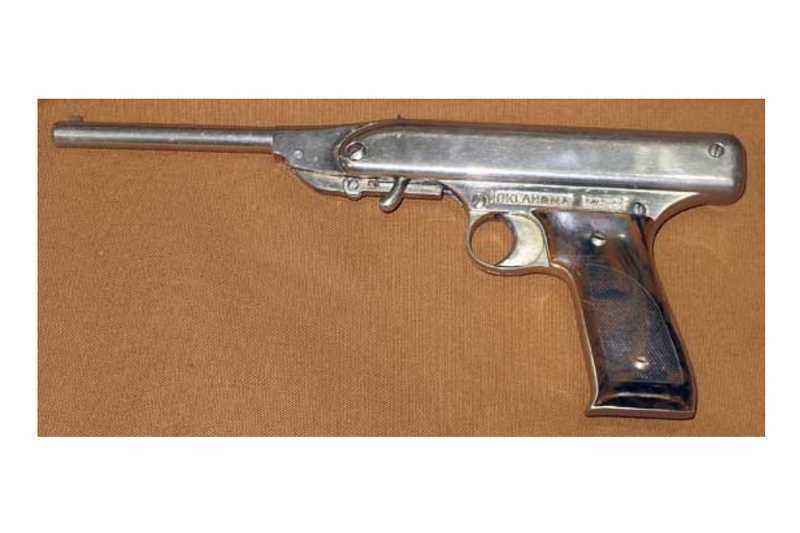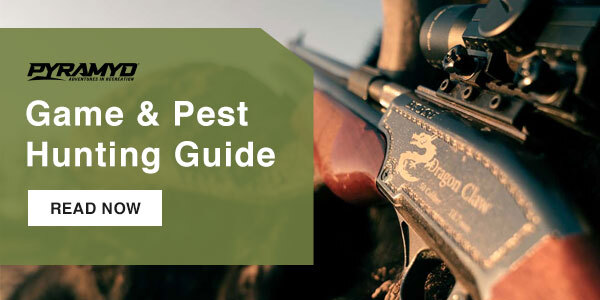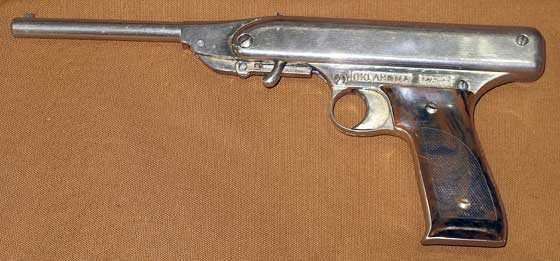
The Mondial Oklahoma pistol.
History of airguns
This report covers:
- Blue Book got it wrong
- Several models
- Two finishes
- Many are boxed
- Strange construction
- Breakbarrel
- Soda straw barrel
- Breech seal
- Markings
- Sights
- Summary
Today we begin looking at a strange air pistol that has a lot of interesting quirks. Do you readers like interesting quirks? Ha! Does an elephant like peanuts? This is the Oklahoma from Mondial. Mondial is the trade name of Modesto Molgora of Milan.
Blue Book got it wrong
First I note that the Blue Book of Airguns lists this pistol as having a rifled barrel. Well, the one I am testing certainly doesn’t. One of two thing are possible. Either the smoothbore I have is a variation that the Blue Book is not currently aware of or they got it completely wrong and all Oklahoma pistols are smoothbore. If you own an Oklahoma pistol would you please examine the bore to see whether it is rifled?
I went online to research this pistol and found very little information. Most listings mention the rifled barrel in such a way that they seem to have copied what’s in the Blue Book. I see that a lot online. Why would anybody mention a rifled barrel, when a smoothbore would be the exception? Yes, there are many smoothbore airguns but why go to the trouble of mentioning a rifled barrel when most airguns have them?
John Walter’s books that are four editions titled, The Airgun Book, aren’t really certain whether the barrel is rifled or not. There is a question mark after the number of lands and the rifling direction. So they don’t know. But BB knows. This one isn’t rifled.
Several models
Mondial made several air pistols besides the Oklahoma we are examining today. One was called the Oklahoma N.T. That one has a hooded front sight, though the rear sight is fixed, so the hood really adds nothing. Another is called the ZIP and it has an adjustable rear sight located back on the rear of the spring tube. And one more pistol is the CO2-powered Roger that was the foundation for the Daisy model 100 pistol that later became the Wamo Powermaster .22 rimfire pistol.
Mondial also made a couple breakbarrel rifles, the Carabina and the York. They also made an underlever BB repeater they called the Condor.
Two finishes
I have found two different finishes for the Oklahoma — blued and nickel. Many would call it chrome, but chrome is very rare on an airgun or a firearm. Nickel is more durable than chrome, making it the plating metal of choice for firearms and airguns. Unless you have the two materials side-by-side it’s difficult to differentiate, but when held next to chrome you will see that nickel plating has a slight golden cast, while chrome is just silver.
The pistol I bought to test is nickel-plated and has no box, because I got it from a generous friend of this blog who sold it to me for a very good price. The grip panels are reddish-brown plastic and are held to the gun with two screws that pass through the gun and have hex nuts inset into the right grip panel. I have more to say about that in a moment.
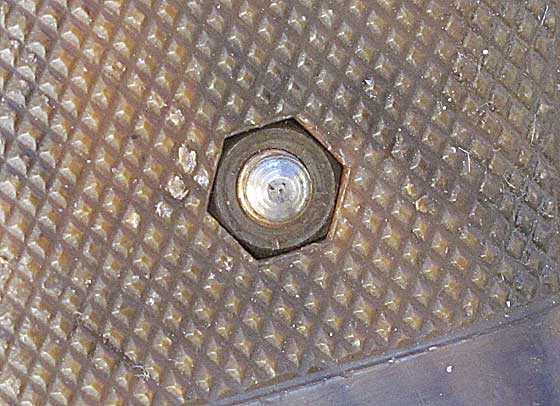
The grip screws are held in by a nut on the right side. It doesn’t look like a hex nut in this photo…
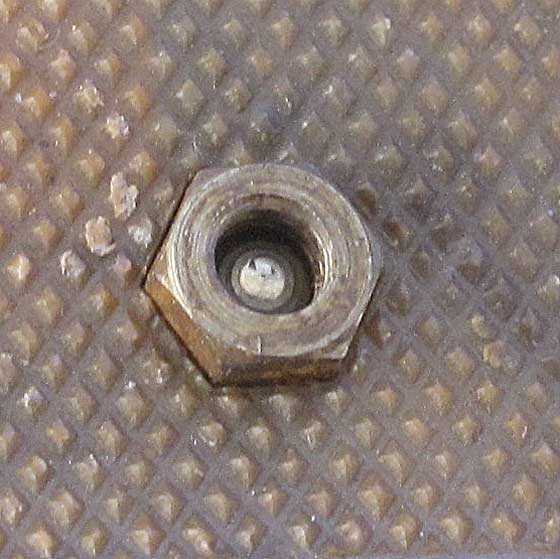
…so I pushed it out to see it better.
Many are boxed
When I looked for a pistol to test for you, most of the ones I saw were offered in the box. According to the printing on the box they came with both pellets and BBs, which underscores the smooth bore. One I found on eBay had an original price sticker on the box marked $7.95. The Blue Book puts the start of this pistol sometime in the 1960s but gives a definite end date of 1988. The John Walters Airgun books agree with the start time and give no ending date.
Strange construction
The pistol is made from two non-ferrous metal frame pieces that are held together by screws and hex nuts all around the frame. Besides the two in the grips I count another four, for a total of six. If they were all removed it appears the pistol would come apart. And there would be pieces held on pins inside and BB would scatter them around
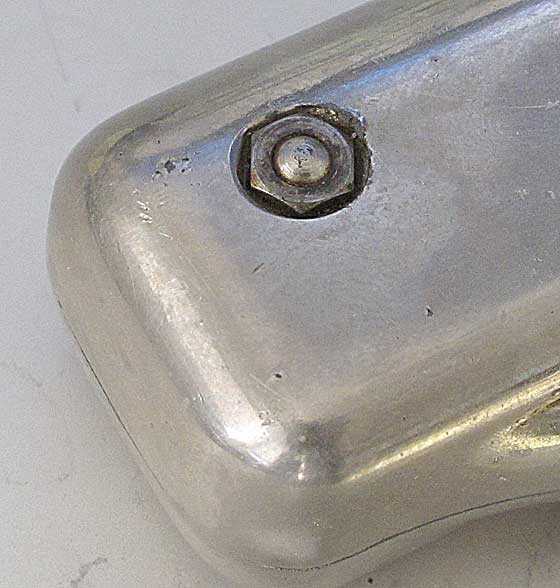
The entire pistol is held together with screws and nuts like this.
Breakbarrel
The Oklahoma is a breakbarrel with a spring-loaded barrel lock. Push it back to release the barrel for cocking.
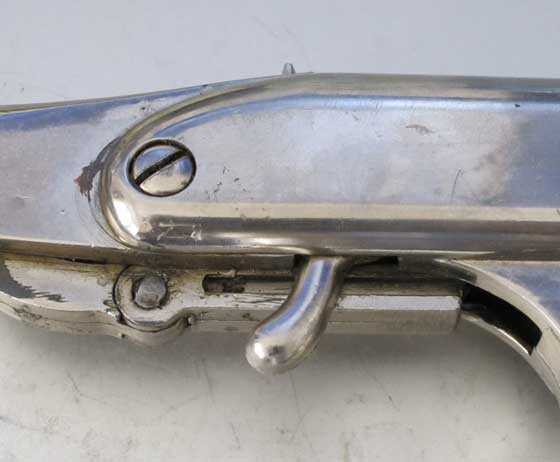
That lever hanging down is a spring-loaded barrel lock.
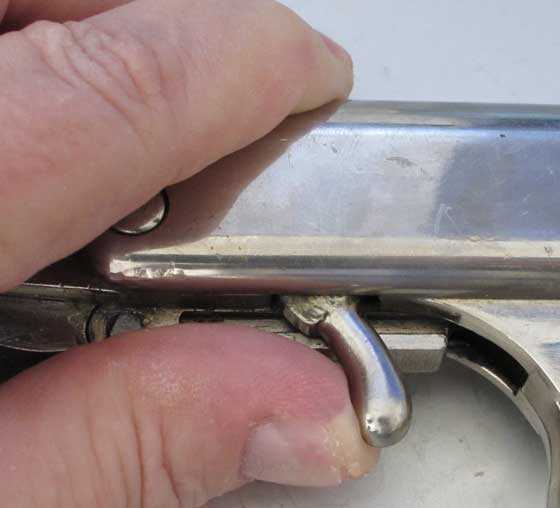
Push the lock back and the barrel is released for cocking.
Soda straw barrel
The barrel is a thin tube that we call a “soda straw” barrel. These are usually rifled barrels, but as I said, this one is a smoothbore. It must have been cheaper to make it this way, because the barrel looks to be pressed into a solid outer jacket.
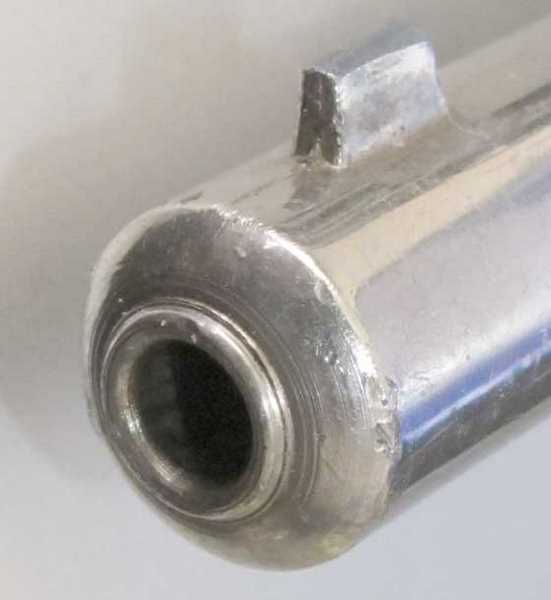
The actual barrel is a thin tube inside an outer jacket. Neither the tube nor the jacket is ferrous.
Breech seal
The breech seal is located on the end of the frame rather than around the breech, where there is no room. It appears to be made of some rubbery synthetic that is still in good condition after no less than 33 years and possibly more than 50.
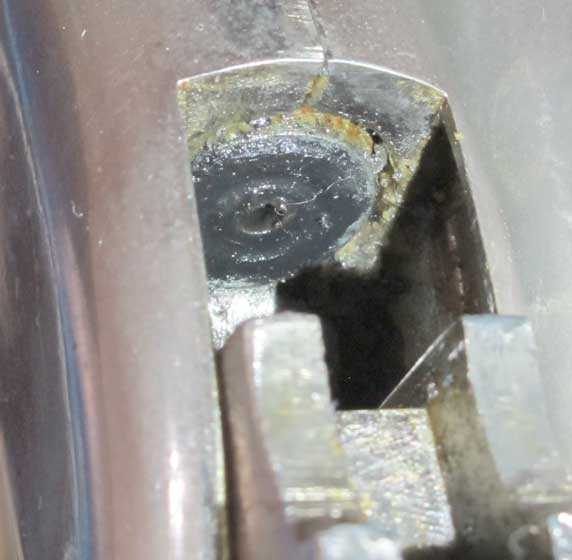
The breech seal is in the frame.
Markings
The maker’s name and logo are on the right side of the frame, along with Made In Italy and Olio, around the oil hole.
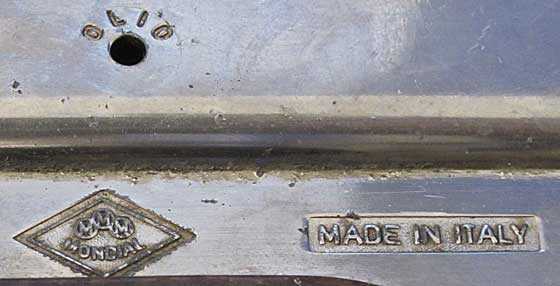
Yep — it was made in Italy all right!
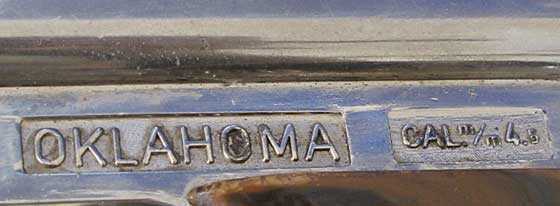
The name of the pistol and the caliber are on the left side.
Sights
The sights are fixed and both the front and rear are attached to the barrel. Given the thickness of the breech seal, it seems the makers were concerned about barrel alignment issues. That plus the barrel lock tells me that the designers of this airgun really cared about making a quality product. It may have been inexpensive but in no way was it cheap. Somebody was doing their best within an envelope of cost constraints. Which makes the smoothbore barrel all the more strange. Guys — I’m telling you all that I know and all that I have been able to find out about this quirky air pistol. Given the huge reach of this blog I am hoping someone can add a few more things to further our knowledge. I would especially like to know whether there really is an Oklahoma with a rifled barrel.
Summary
I’ve been a serious airgunner (as in paying attention to what is going on, over and above just shooting the guns) since starting The Airgun Letter in 1994. Since then I have seen Oklahoma pistols at several airgun shows but never have I taken the plunge. I did it now just to expand my horizons, as well as yours.
There isn’t very much written about this air pistol — at least not in the English language. Much of what is written seems to be guesswork, though Walter’s books do have some solid facts about the companies involved and the models of the guns. This one should be interesting.
